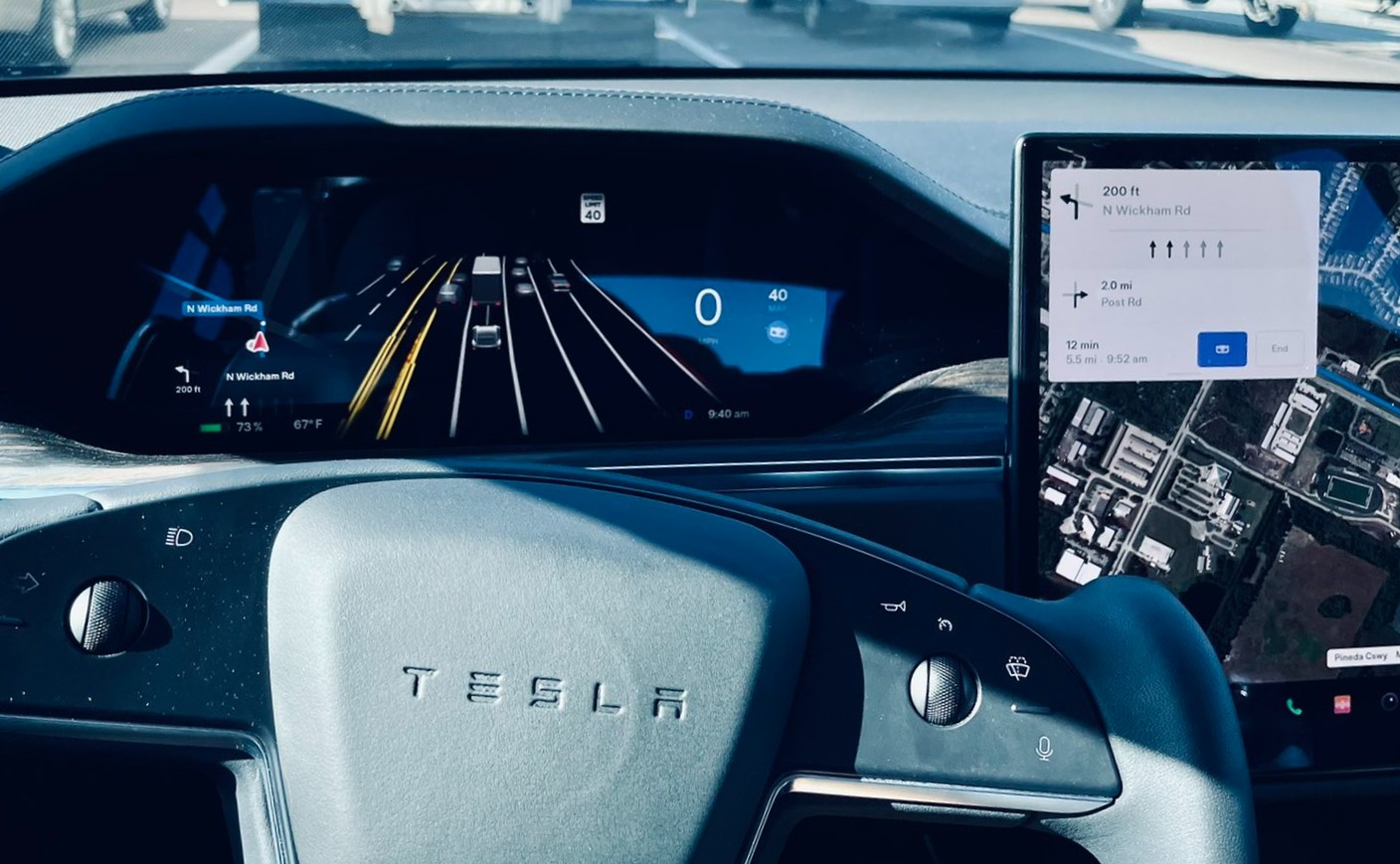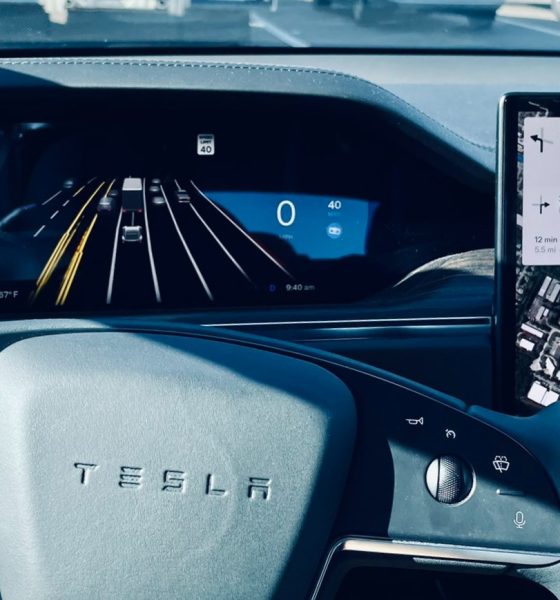

News
Tesla sends cease-and-desist letter against ad claiming FSD will “mow down children”
It took a while, but Tesla finally seems to be putting some effort into curbing an aggressive and controversial anti-FSD ad that claims that the company’s advanced driver assist system is unsafe and will “indiscriminately mow down children.” A cease-and-desist letter from the electric vehicle maker has reportedly been sent to The Dawn Project, an advocacy group from Dan O’Dowd, the CEO of Green Hills Software, a company that is also developing self-driving software.
The Anti-FSD Ad
Earlier this month, O’Dowd, through The Dawn Project, started pushing an anti-FSD ad that supposedly showed a Model 3 hitting a child-sized mannequin while FSD was engaged. The video and O’Dowd’s succeeding Twitter commentary were salacious, so it was no surprise that the ad’s allegations were echoed by numerous news outlets. The campaign attracted attention and criticism from Tesla supporters, however, some of whom proceeded to point out discrepancies in the anti-FSD ad.
A number of FSD Beta testers, who have been using Tesla’s advanced driver-assist system for years, proceeded to conduct tests of their own, showing that FSD Beta does stop for people. Others observed that the driver of the Model 3 in O’Dowd’s test intentionally ignored safety warnings from the vehicle. Even EV fan blog Electrek pointed out a number of inconsistencies with O’Dowd’s supposed FSD test results and data, including a sequence in the ad when the advanced driver-assist system was not engaged at all.
Cease-And-Desist
In its cease-and-desist letter, which was retrieved by The Washington Post, Tesla objected to the anti-FSD ad. The company alleged that the footage being pushed by O’Dowd was defamatory and misrepresented the capabilities of its advanced driver-assist system. Tesla demanded that the anti-FSD campaign be immediately halted and the videos be removed.
“The purported tests misuse and misrepresent the capabilities of Tesla’s technology, and disregard widely recognized testing performed by independent agencies as well as the experiences shared by our customers,” Tesla deputy general counsel Dinna Eskin wrote. Tesla also accused O’Dowd’s team of “unsafe and improper use” of FSD Beta. “Your actions actually put consumers at risk,” the EV maker added.
O’Dowd has reacted strongly to the letter. In a post on Twitter, O’Dowd noted that Musk was threatening to sue him. The Green Hills CEO included an incendiary illustration captioned with “Elon Musk’s Idea of Free Speech” on his post, which depicted Musk naked on his plane with a bound woman sandwiched between two male lawyers. The image seems designed to bait Musk, though Tesla itself has not issued a statement about its cease-and-desist letter.
“This letter is so pathetic in terms of whining: Mr. Free Speech Absolutist, just a crybaby hiding behind his lawyers,” O’Dowd told the Post. He also stated that he does not intend to take down his anti-FSD campaign. Instead, O’Dowd has pledged to put even more money into his anti-FSD efforts.
Not the First Time
This is not the first time that Dan O’Dowd has put Tesla in his crosshairs. Earlier this year, O’Dowd ran for California Senate with the sole purpose of stopping Tesla’s driver-assist systems, which he claims are the worst he has seen. For context, O’Dowd has stated that his software never fails and is unhackable, a claim that has been challenged by cyber security advocates.
Interestingly enough, Politico reported that O’Dowd actually did not plan to win a seat in the CA Senate at all — he was simply in the race because running for office entitled him to the lowest available ad rate in the run-up to the election. It also granted a higher degree of first amendment protection for his loaded claims against Tesla. Ultimately, O’Dowd ended up spending $3.8 million during his campaign — one of the most out of CA Senate candidates— but it resulted in him only getting 1.1% of the votes.
Don’t hesitate to contact us with news tips. Just send a message to simon@teslarati.com to give us a heads up.

Elon Musk
Elon Musk’s X will start using a Tesla-like software update strategy
The initiative seems designed to accelerate updates to the social media platform, while maintaining maximum transparency.

Elon Musk’s social media platform X will adopt a Tesla-esque approach to software updates for its algorithm.
The initiative seems designed to accelerate updates to the social media platform, while maintaining maximum transparency.
X’s updates to its updates
As per Musk in a post on X, the social media company will be making a new algorithm to determine what organic and advertising posts are recommended to users. These updates would then be repeated every four weeks.
“We will make the new 𝕏 algorithm, including all code used to determine what organic and advertising posts are recommended to users, open source in 7 days. This will be repeated every 4 weeks, with comprehensive developer notes, to help you understand what changed,” Musk wrote in his post.
The initiative somewhat mirrors Tesla’s over-the-air update model, where vehicle software is regularly refined and pushed to users with detailed release notes. This should allow users to better understand the details of X’s every update and foster a healthy feedback loop for the social media platform.
xAI and X
X, formerly Twitter, has been acquired by Elon Musk’s artificial intelligence startup, xAI last year. Since then, xAI has seen a rapid rise in valuation. Following the company’s the company’s upsized $20 billion Series E funding round, estimates now suggest that xAI is worth tens about $230 to $235 billion. That’s several times larger than Tesla when Elon Musk received his controversial 2018 CEO Performance Award.
As per xAI, the Series E funding round attracted a diverse group of investors, including Valor Equity Partners, Stepstone Group, Fidelity Management & Research Company, Qatar Investment Authority, MGX, and Baron Capital Group, among others. Strategic partners NVIDIA and Cisco Investments also continued support for building the world’s largest GPU clusters.
News
Tesla FSD Supervised wins MotorTrend’s Best Driver Assistance Award
The decision marks a notable reversal for the publication from prior years, with judges citing major real-world improvements that pushed Tesla’s latest FSD software ahead of every competing ADAS system.

Tesla’s Full Self-Driving (Supervised) system has been named the best driver-assistance technology on the market, earning top honors at the 2026 MotorTrend Best Tech Awards.
The decision marks a notable reversal for the publication from prior years, with judges citing major real-world improvements that pushed Tesla’s latest FSD software ahead of every competing ADAS system. And it wasn’t even close.
MotorTrend reverses course
MotorTrend awarded Tesla FSD (Supervised) its 2026 Best Tech Driver Assistance title after extensive testing of the latest v14 software. The publication acknowledged that it had previously criticized earlier versions of FSD for erratic behavior and near-miss incidents, ultimately favoring rivals such as GM’s Super Cruise in earlier evaluations.
According to MotorTrend, the newest iteration of FSD resolved many of those shortcomings. Testers said v14 showed far smoother behavior in complex urban scenarios, including unprotected left turns, traffic circles, emergency vehicles, and dense city streets. While the system still requires constant driver supervision, judges concluded that no other advanced driver-assistance system currently matches its breadth of capability.
Unlike rival systems that rely on combinations of cameras, radar, lidar, and mapped highways, Tesla’s FSD operates using a camera-only approach and is capable of driving on city streets, rural roads, and freeways. MotorTrend stated that pure utility, the ability to handle nearly all road types, ultimately separated FSD from competitors like Ford BlueCruise, GM Super Cruise, and BMW’s Highway Assistant.
High cost and high capability
MotorTrend also addressed FSD’s pricing, which remains significantly higher than rival systems. Tesla currently charges $8,000 for a one-time purchase or $99 per month for a subscription, compared with far lower upfront and subscription costs from other automakers. The publication noted that the premium is justified given FSD’s unmatched scope and continuous software evolution.
Safety remained a central focus of the evaluation. While testers reported collision-free operation over thousands of miles, they noted ongoing concerns around FSD’s configurable driving modes, including options that allow aggressive driving and speeds beyond posted limits. MotorTrend emphasized that, like all Level 2 systems, FSD still depends on a fully attentive human driver at all times.
Despite those caveats, the publication concluded that Tesla’s rapid software progress fundamentally reshaped the competitive landscape. For drivers seeking the most capable hands-on driver-assistance system available today, MotorTrend concluded Tesla FSD (Supervised) now stands alone at the top.
News
Elon Musk’s Grokipedia surges to 5.6M articles, almost 79% of English Wikipedia
The explosive growth marks a major milestone for the AI-powered online encyclopedia, which was launched by Elon Musk’s xAI just months ago.

Elon Musk’s Grokipedia has grown to an impressive 5,615,201 articles as of today, closing in on 79% of the English Wikipedia’s current total of 7,119,376 articles.
The explosive growth marks a major milestone for the AI-powered online encyclopedia, which was launched by Elon Musk’s xAI just months ago. Needless to say, it would only be a matter of time before Grokipedia exceeds English Wikipedia in sheer volume.
Grokipedia’s rapid growth
xAI’s vision for Grokipedia emphasizes neutrality, while Grok’s reasoning capabilities allow for fast drafting and fact-checking. When Elon Musk announced the initiative in late September 2025, he noted that Grokipedia would be an improvement to Wikipedia because it would be designed to avoid bias.
At the time, Musk noted that Grokipedia “is a necessary step towards the xAI goal of understanding the Universe.”
Grokipedia was launched in late October, and while xAI was careful to list it only as Version 0.1 at the time, the online encyclopedia immediately earned praise. Wikipedia co-founder Larry Sanger highlighted the project’s innovative approach, noting how it leverages AI to fill knowledge gaps and enable rapid updates. Netizens also observed how Grokipedia tends to present articles in a more objective manner compared to Wikipedia, which is edited by humans.
Elon Musk’s ambitious plans
With 5,615,201 total articles, Grokipedia has now grown to almost 79% of English Wikipedia’s article base. This is incredibly quick, though Grokipedia remains text-only for now. xAI, for its part, has now updated the online encyclopedia’s iteration to v0.2.
Elon Musk has shared bold ideas for Grokipedia, including sending a record of the entire knowledge base to space as part of xAI’s mission to preserve and expand human understanding. At some point, Musk stated that Grokipedia will be renamed to Encyclopedia Galactica, and it will be sent to the cosmos.
“When Grokipedia is good enough (long way to go), we will change the name to Encyclopedia Galactica. It will be an open source distillation of all knowledge, including audio, images and video. Join xAI to help build the sci-fi version of the Library of Alexandria!” Musk wrote, adding in a later post that “Copies will be etched in stone and sent to the Moon, Mars and beyond. This time, it will not be lost.”








